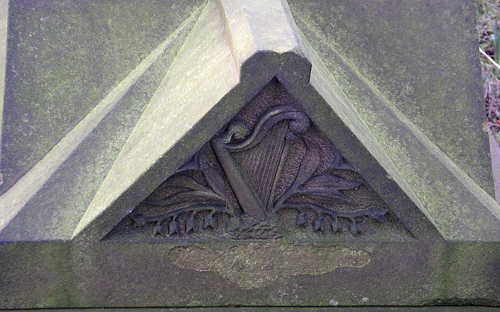This article was originally written for publication in the Huddersfield Examiner.
This year marks the 150th anniversary of the Yorkshire Archaeological Society which was born in Huddersfield in 1863. In this article former archaeologist Alan Brooke outlines the intriguing life of one of the founders of the organisation.
The Yorkshire Archaeological Society, originally the Huddersfield Archaeological and Topographical Association (HATA), began life at a meeting held in the parsonage at Netherthong on 1 April 1863. The host of the meeting, the Rev Thomas James, was well qualified to promote such a venture. He was steeped in the history and folklore of his native Wales, prominent in the Cambrian Archaeological Association and an editor of the Cambrian Journal, a pioneering archaeological periodical.
The Rev. James, born in 1817 at Manordeifi in Pembrokeshire, became ‘perpetual curate’ of All Saints Church at Netherthong in 1846. He was one of a group of Welsh clergymen in the area, which included his brother David, the curate of Marsden, the Rev. Lewis Jones, vicar of Almondbury, and Joseph Hughes, curate of Meltham. In 1852 they began meeting as the ‘Association of Welsh Clergy in the West Riding of the County of York’ to discuss matters relating to the church in Wales.
But the Rev James’ interests were not limited to the Welsh church. He was also an enthusiastic supporter of the Bardic movement which sought to encourage a revival of Welsh language and culture by holding Eisteddfodau, competitive festivals, where prizes were offered for music, song, poetry and historical essays. The highpoint of the festivals was the Gorsedd of the Bards, a procession supposed to be founded on ancient Druidic ritual. The Rev James adopted the Bardic name Llallawg, an alias of the Bardic-Druidic figure Myrddin, (better known as Merlin of Arthurian legend), and served as an adjudicator at Eisteddfodau as well as donating prize money.
In 1858 he became embroiled in a dispute which scandalised the Eisteddfod and set him at odds with fellow bard and cleric, the Rev Joseph Hughes, curate and historian of Meltham. The Rev Hughes, from Newport in Pembrokeshire, used the bardic name Carn Ingli, after the hill fort outside his native town. In 1858 he was one of the organisers of the Llangollen Eisteddfod at which Llallawg was asked to judge the history prize. Although the topic was the discovery of America by the twelfth century Welsh price Madoc, the best essay by far argued that this was merely a legend and had never happened. Carn Ingli disqualified it as irrelevant to the theme, Llallawg resigned as judge in protest – and there was uproar at the Eisteddfod.
As his role in establishing HATA shows, the Rev James also loved the heritage of his adopted home. He wrote a paper on ‘The early Antiquities of the District’ and was for a time editor of the ‘Transactions of the Yorkshire Archaeological and Topographical Journal’, which became the still surviving ‘Yorkshire Archaeological Journal’. He also helped the publication of the Rev Hughes ‘History of Meltham’ left unfinished by the author’s death in 1862.
In 1870 Thomas married Jane Hammet of Plymouth but she died two years later of a seizure said to have been brought on by a thunderstorm. Thomas himself became increasingly infirm and was described by the Rev Hulbert in his Annals of Almondbury as ‘a recluse’. However he was still involved in the Eisteddfod movement.
In 1873, as the ‘archdruid of Gwynedd’, the Rev James offered the prize for the best ‘peithynfaen’, wooden books with verse written in bardic characters known as ‘Coelbren y Beirdd’. It was not then known that this alphabet, which was supposed to have been devised by the druids over 2,000 years ago, was less than a century old. It was fabricated in the 1790s by poet and folklorist Edward Williams, known as Iolo Morganwg, who was one of the driving forces behind the revival of the Eisteddfodau.

A ‘peithynfaen’
The Rev James died in 1879 and his enthusiasm for the Bardic past, imaginary or not, is celebrated on his grave cover. The cross shaped grave lies just by the church door at Netherthong. The inscription is in the Bardic Alphabet. This has been kindly deciphered and translated by Mr Owain Rhys of the Museum of Wales. One side records the birth and death of Thomas himself and the fact he had been curate for 33 years, the other the death of Jane. The carved symbolism also speaks volumes about the man. There is a leek representing Wales, a harp reflecting his Bardic personality and, perhaps strangest of all in a Christian graveyard, the druidic symbols of oak leaves and mistletoe. Equally strange is the fact that the Yorkshire Archaeological Society may owe its origins to the druid curate of Netherthong.


